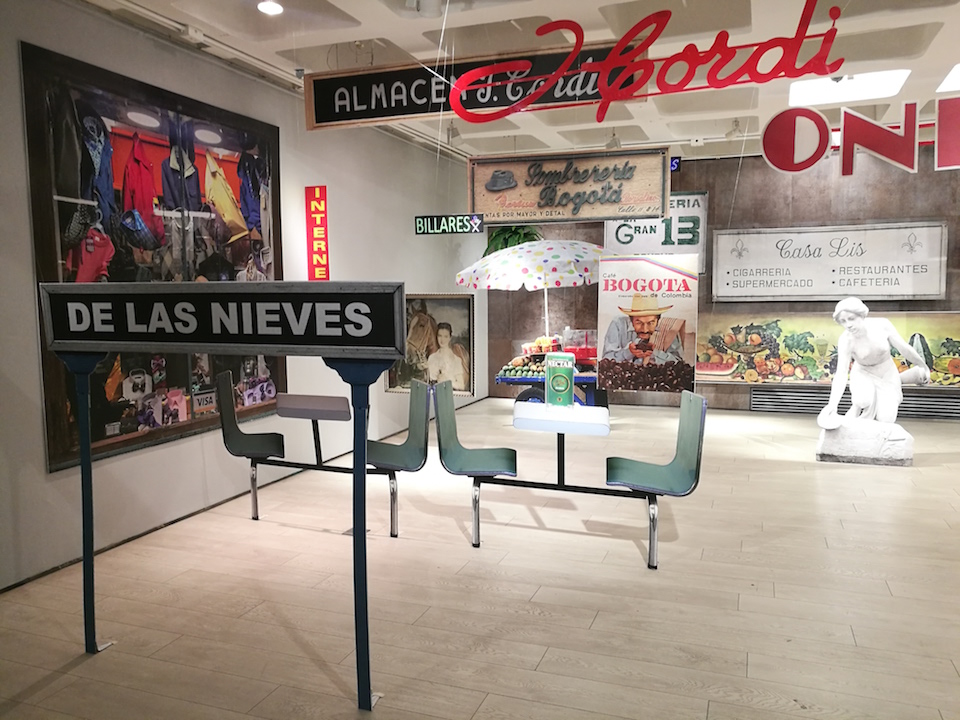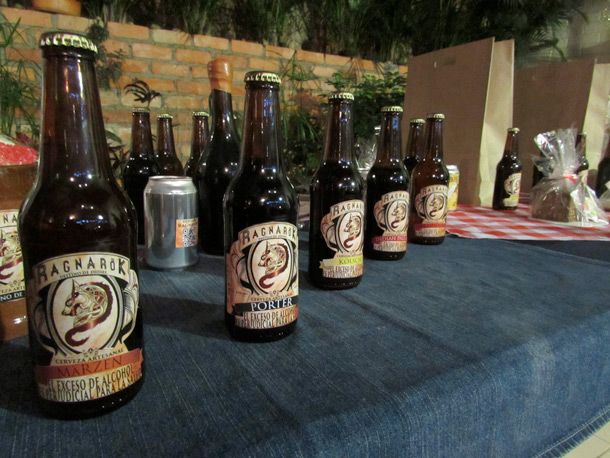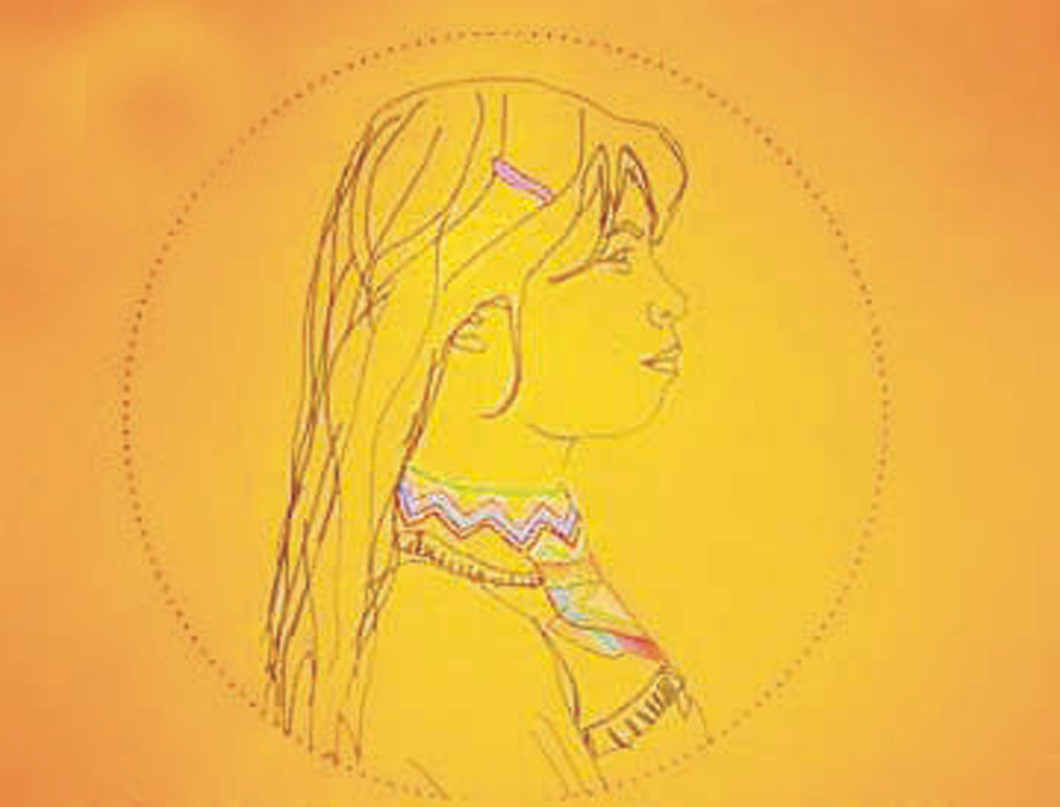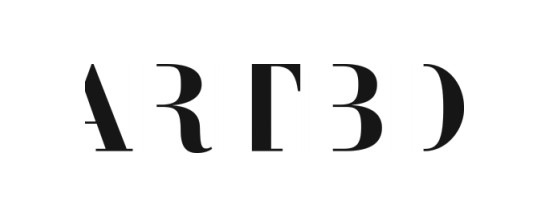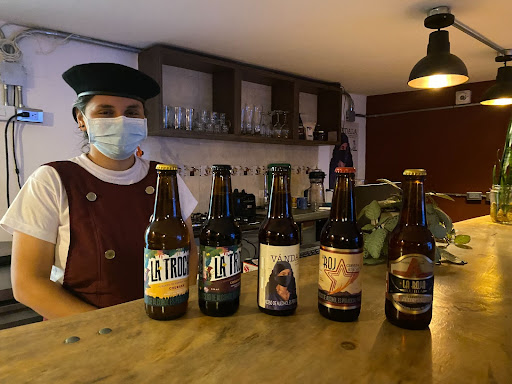
Five years after a peace deal in which they left their jungle camps and laid down their weapons, female former guerrilla combatants and women activists have set up shop in Popayán’s hip Barrio Caldas neighborhood, inviting residents to sample their selection of delicious craft beer and engage in an honest and open discussion about reconciliation.
“Women have always been involved in the peace process,” said Erika Calderón, the legal representative of the women’s association Asociación de Mujeres por la Paz con Justicia Social Las Manuelitas (Las Manuelitas, for short). “We wanted to open up this space as a place for people to talk, share, and reconcile the past.”
Opening the path to reconciliation
Las Manuelitas was formed in 2017 in the Pacific department of Cauca, by women who wanted to help further the historic peace process between the Colombian government and the left-wing guerilla group Revolutionary Armed Forces of Colombia (FARC). They felt that the government wasn’t doing enough to help ex-FARC women integrate into society, nor foster an atmosphere of reconciliation.

More than 60% of people in Cauca live in rural zones; the region also sees nearly double the Colombian national poverty index at 62%, meaning more than half the residents of Cauca live in poverty. In many regions where the FARC used to operate, land used for coca cultivation saw a 298% increase between 2012 and 2018, due to the fact that earnings from coca can easily outstrip earnings from legal crops like sugarcane or coffee. Due to this, many ex-FARC combatants seeking work can be faced with a tough choice, as they lack the skills needed to find jobs in the region’s main urban areas.
Groups like Las Manuelitas have stepped in to offer ex-FARC members the opportunity to earn a living, which helps prevent them from taking up arms again.
“People in Cauca feel like this government has shown little interest in advancing the deal,” Calderón said.
According to Calderón, many people in Popayán say the government has not fulfilled its commitments to the peace process, leaving the peace and reconciliation up to ex-FARC rebels and members of the community.
Thus, Popayán’s hip new beer bar La Trocha Sentires de la Montaña (La Trocha for short, roughly translated as “the trail”) was born. La Trocha aims to support the community and ex-FARC women combatants where government promises failed. La Trocha’s support network helps ex-FARC women look for jobs and learn entrepreneurial skills. The space is also offered up as a marketplace where ex-FARC combatants can sell artisanal goods and network.
It also hosts workshops where women can discuss political issues, support groups for victims of domestic violence, classes that teach organizational skills to female entrepreneurs, and a program called “community care and wellness” which prioritizes kids and childcare.
“To ‘open la trocha’ is to use a machete to create a new road to get to a new place in the jungle,” said Calderón. “In this case, we are opening a road to peace primarily led by women.”
Although Calderón is not an ex-combatant herself, she is heavily involved in local political activism and has been participating in the peace process for years. As FARC combatants moved out of the jungle and into reincorporation zones scattered throughout Colombia, Calderón gave workshops to help them incorporate into regular Colombian life. But as the temporary camps became permanent, security problems arose.
“Over time these places became dangerous … A lot of people from the countryside had to come to the city, and they couldn’t adapt,” Calderón said. “One of the women I knew from one of these camps whose nom de guerre was ‘Julie’ was killed the day before the inauguration of this place. That’s why this project is so important.”
The opening of La Trocha’s Popayán location on October 15, 2021 is the ambitious project’s second opening in less than a year. Donations from the Swiss Embassy, amongst others, help provide additional funds to the program.
Aims of La Trocha
- Sell ‘products of peace’ made by ex-FARC combatants, or products meant to empower women while furthering the peace process.
- Provide an option for women to have financial autonomy, by hosting classes and seminars.
- Build a community free of gendered violence.
- Create an environment of reconciliation for ex-FARC members and the community to educate, reflect and understand.
Tour of La Trocha
The Bogotá Post went to La Trocha for the grand tour and to sample some craft beer. La Trocha itself is divided into three main spaces meant to emulate various aspects of life in a guerrilla camp in Colombia’s mountainous jungles, and showcases important symbology that resonates with ex-FARC combatants.
All the women who work in La Trocha dress in a uniform that can only be described as Latin American communist chic – aprons that look like military-style, six-brass-button waistcoats, Che Guevara berets (red or black), patterned floral shirts reminiscent of hipster camouflage, and all-terrain style jungle fanny packs manufactured and sold by ex-FARC militants in La Trocha’s shop under the brand La Montaña.
Beer, cocktails, non-alcoholic beverages and coffee are accompanied by meals and snacks (the papas fritas with peanut and pineapple ají were great).
“We also sell peace products – bags and backpacks, handmade dolls, artisanal jewelry, dresses, t-shirts, kimonos, honey, bags of coffee to take home, and herbal tea,” Calderón told us during the tour.
The ground floor offers patrons a traditional bar and coffee shop experience, with artistic renderings of totemic items drawn in thin white paint on the maroon walls and illuminated by lights stylized to look like lanterns.
The first of these totems is a painting of a frailejón, a high-altitude perennial whose soft leaves can be used to insulate clothes. The second icon on the wall is a gasoline lantern of the kind you would use to guide your way along a dark “trocha.” A third depicts a machete in its sheath – the most common tool in the countryside and highly useful when you’re encamped in the jungle. The final rendering is of the “churuco” monkey, which was an important animal to FARC guerrillas because they would imitate its call by kissing the palms of their hands, to signal to each other clandestinely, Calderón said.
The furniture throughout La Trocha is made of sanded, unfinished wood, evoking a forested environment. The stereo plays a mix of South American punk rock, chirimía (an Andean woodwind and drum-based genre of music frequently played in southwest Colombia during political protests) and of course salsa typical to the Pacific region.
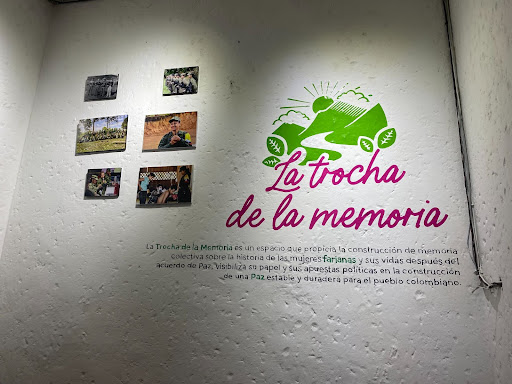
“We are trying to represent the invisible role of women within the armed group during the years of conflict. We want to create a timeline that shows the various roles women played in FARC, and how they are now involved in the peace process today. Our goal is to humanize these women,” Calderón said.
The photographic journey begins in black in white in 1964, and shows a row of Colombian women in berets and sunglasses shouldering assault rifles in a jungle clearing. A few frames later, women are depicted in different roles within the organization – as military leaders, nurses, and radio operators.
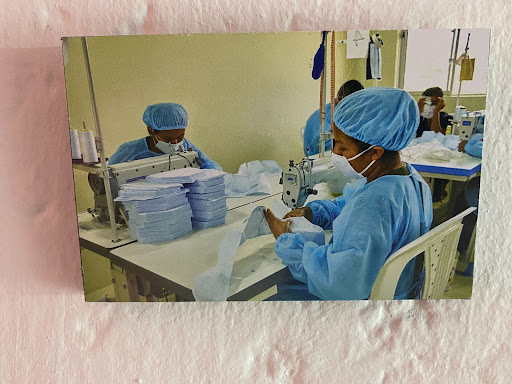
Exiting the photo gallery, the atmosphere shifts to that of a remote workspace filled with people working on laptops. This is Salón Azul.
“Downstairs you feel comfortable, like you’re in a coffee house, but the idea when you go upstairs is to make you feel like you’re in the jungle,” Calderón smiled.
Rendered in shades of blue, white, and metallic gold paint is a guerilla camp deep in the jungle, surrounded by flora commonly spied in the Cauca countryside, including opium poppy (useful for pain relief), helecho (a giant fern that was used by the FARC to make bedding), and anturio (a plant found everywhere in Andean rainforests), according to Calderón.
Machetes, lanterns and cooking pots hang from leather straps on moss-festooned tree trunks in this nighttime scene. The metallic gold paint adds warmth to the light emanating from the slits of the unseen guerrillas’ tent flaps. The light fixtures in Salón Azul are delicate brass flowers with elongated oval bulbs.
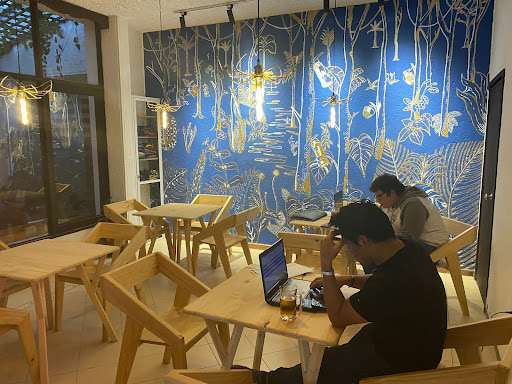
Connected to Salón Azul is a meeting space called ‘Caleta.’ On the walls is a mural of abstracted animal shapes juxtaposed with military equipment. A yellow bird silhouette and a deconstructed monkey flank a toucan and helicopter bathed in the dapple light from large wicker baskets lampshades.
When I visited, a group of four women sat with their laptops chatting and snacking on empanaditas de pipián (a kind of bite-sized, crispy, fried potato dumpling endemic to Popayán and typically served with spicy peanut and pineapple sauces).
“In FARC camps, the term caleta was a place meant for sleeping, and it also means the woven mats made from helecho that combatants would sleep on. Today, we wanted to resignify the term caleta to mean a place where we can exercise our historical memory – like a museum, a place to reconcile,” Calderón explained.
Another room, filled with children’s toys, is meant to function as a nursery for ex-FARC women who want to utilize La Trocha’s many free resources.
“We’re trying to get support for another program aimed at helping older women,” Calderón added, closing out the tour by gently encouraging me to go back downstairs and order some beer already.
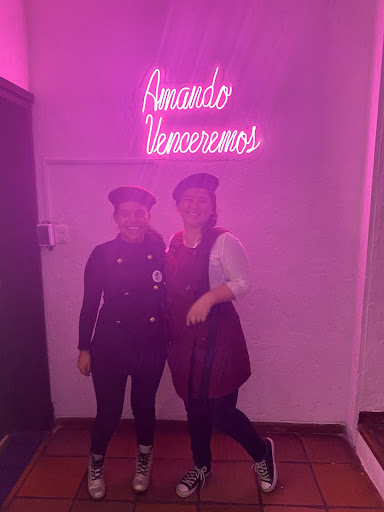
La Trocha Beer Review:
Of the six beers sold at La Trocha, The Bogotá Post sampled them all. Here are three that stood out.
La Trocha “Churuka” by Tomahawk Brewery — Named after the monkey discussed above, this one is a ‘dorado’ style lager beer made with maracuya, giving the brew a bit of bite and an intense floral bouquet. It’s not as sweet as a Belgian fruit beer but is instead very nice, very mellow, and refreshing. It is manufactured by Tomahawk Brewery in Bogotá for La Trocha.
La Vandela – “La Cerveza Artesanal del Paro Nacional” (Artisanal Beer of the Colombian National Strike) by Cafe Pushkin — Described as a campesino (peasant farmer) Amber Ale that uses pure water from the Páramo de Chingaza in the Colombian Andes. It contains the highest ABV of any of La Trocha’s offerings (a hefty 6%) and comes packed with loads of malty caramel flavor.
La Roja — Handmade beer produced by people in the reincorporation process who are developing productive projects (we wrote more about this beer here). This is the only beer manufactured in a reincorporation zone by ex-combatants: ETCR (the new name for ZTVN: Territorial Training and Reincorporation Areas) Icononzo Tolima. The brewery seeks to include local ingredients, like panela and rice.

